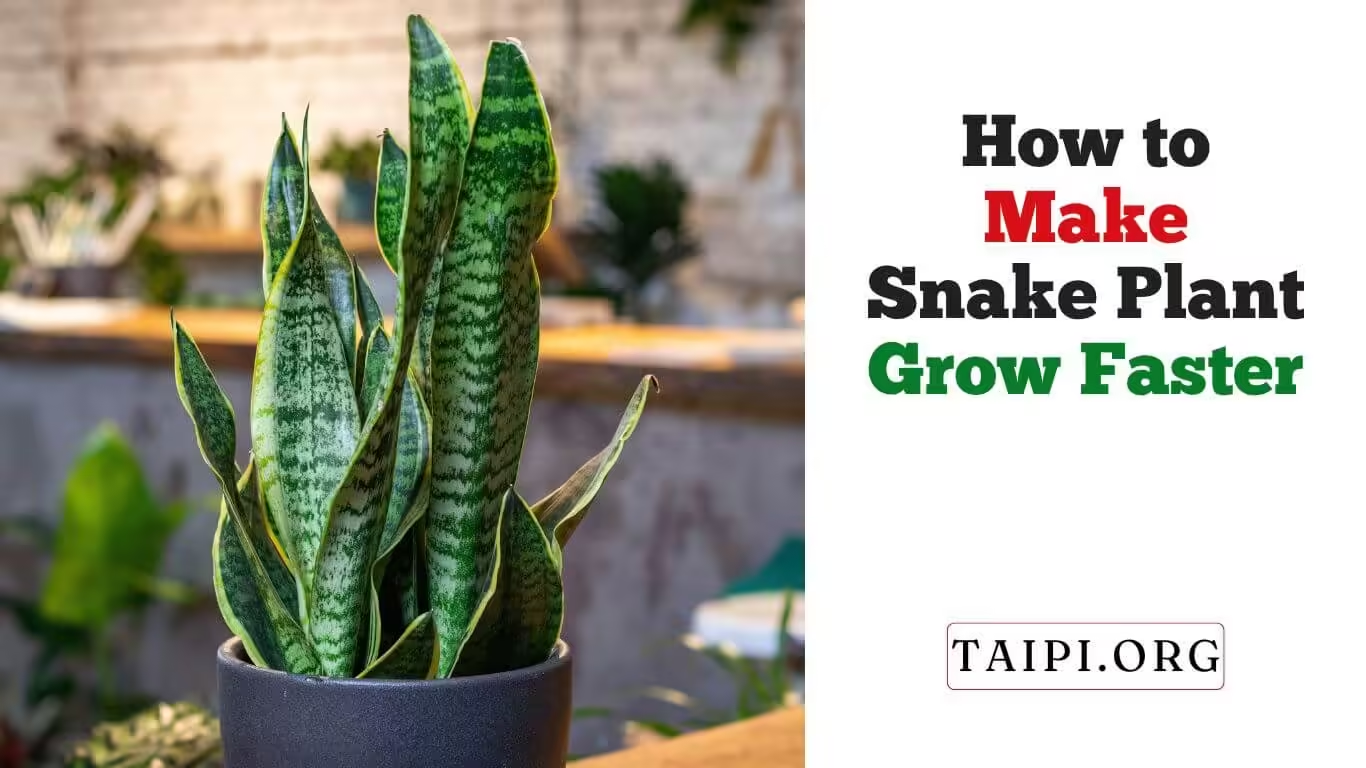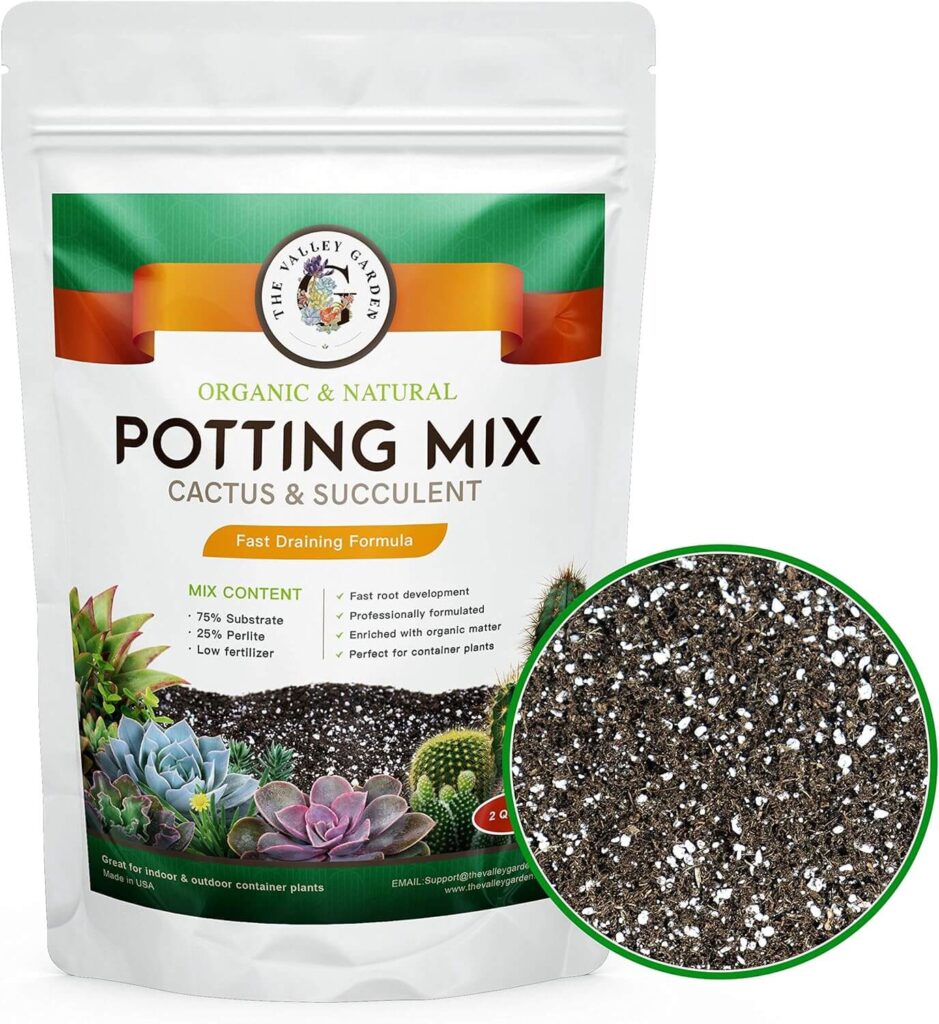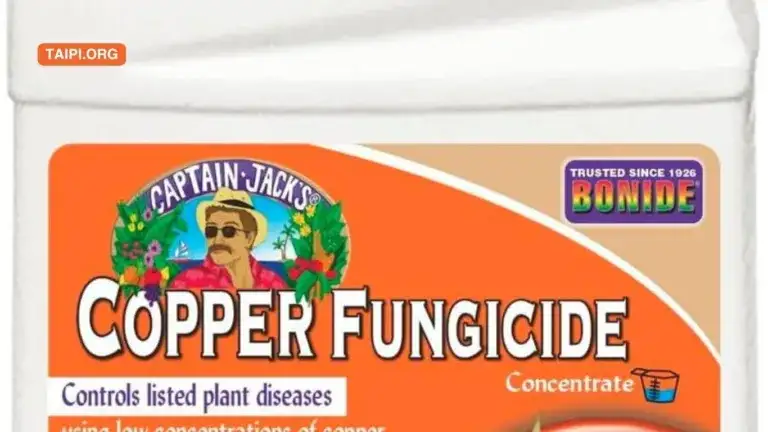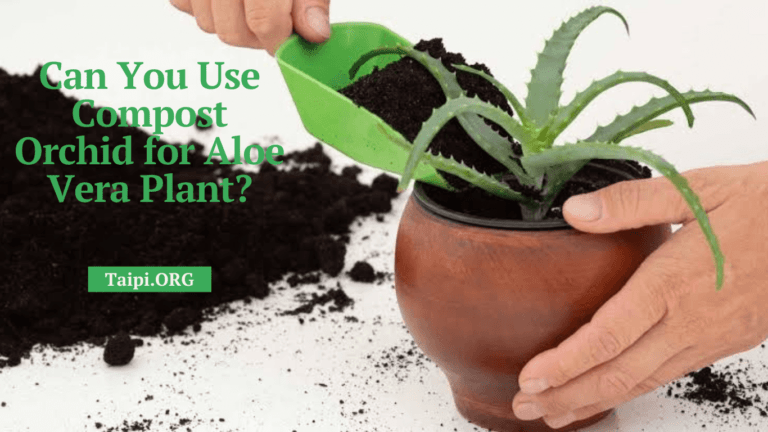How to Make Snake Plant Grow Faster
A SNAKE PLANT is a favorite selection among indoor plant enthusiasts due to its distinctive aesthetics and minimal upkeep requirements. Yet, many indoor plant owners, beginners, or experts, often wonder how to make snake plant grow faster.
Fortunately, implementing several strategies can assist in nurturing your snake plant toward accelerated growth and expansion.
Understanding the Growth of Snake Plants
Snake plants typically grow up to 3 inches in height per month during their growing season, producing 2-4 leaves. However, growth may slow down in winter due to reduced sunlight and lower temperatures. While some seasonal slowdown is natural, prolonged stagnation in growth may indicate underlying issues that need to be addressed.
How to Make Your Snake Plant to Grow Faster

Nobody wants to see their indoor plants stagnate rather than grow to become a big and vibrant indoor tree. Here as some of the practical strategies that can help you expedite your snake plant growth:
Repot into a Slightly Larger Pot
Pot size plays a crucial role in a snake plant’s growth rate. If the plant becomes root-bound, where the roots outgrow the pot, it can inhibit further growth. Repotting your snake plant into a slightly larger container provides the roots with more space to expand, promoting healthier growth.
Use Well-Draining Soil
Snake plants prefer well-draining soil that allows water to flow through easily. This soil type prevents the roots from waterlogging and rotting, stunting the plant’s growth.
Choose a high-quality potting mix (pictured ⬆)specifically designed for indoor plants when repotting your snake plant. Avoid using heavy soils such as garden soil, as they can become compacted and prevent the roots from growing.
Watch Your Watering Practices
As commonly understood, providing water to a plant is vital for its sustenance. However, improper watering techniques can hinder the growth of a snake plant.
Administer just the right amount of water to ensure optimal thriving conditions. Understanding the detrimental effects of over or under-watering on your plant’s growth is crucial.
Improper watering practices can impede the growth of your snake plant and discover solutions to facilitate its accelerated growth.
Effects of Overwatering Your Snake Plant
Generally, snake plants do not require a lot of water to survive. These plants are considered succulents and they thrive with very little watering. As discussed above, if you place snake plants in indirect sunlight, the soil will not dry too quickly.
So, watering frequently may lead to overwatering, which finally causes root rot and fungal diseases in Snake plants. In this case, the plant cannot grow properly and stops its growth until the condition becomes favorable.
Why Underwatering Snake Plants is a Serious Problem
As Snake plants are tolerant of drought conditions, many new gardeners ignore watering them for a long time. They can survive without water for a while but, underwatering the plant may result in slow growth. You need to check for the dryness in the soil of the plant to water it.
Give your snake plant a good drink of water when the soil is completely dry. If you do not do it, the roots get dehydrated and cannot supply water to the other parts of the plant which makes your plant grow slowly. That is why water them enough to get rid of this problem.
Provide Bright, Indirect Sunlight

Snake plants thrive in bright, indirect sunlight. Positioning them near a window where they can receive ample light without direct exposure to harsh sunlight is ideal. Adequate light is crucial for photosynthesis and overall plant health.
Consider a Grow Light
Supplementing with a grow light can be beneficial in situations where natural light is insufficient. LED grow lights provide the specific spectrum of light needed for plant growth, helping to compensate for low light conditions and promoting faster healthier growth.
Keep the Plant Slightly Root-Bound
Maintaining a slight root-bound condition can stimulate growth in snake plants. When roots encounter resistance from the pot walls, they redirect their energy towards vertical growth, resulting in taller, more robust plants.
However, it’s essential to monitor root growth to prevent overcrowding and potential root damage.
Provide a Humid Environment
While snake plants can tolerate low humidity levels, they prefer a slightly humid environment. Increasing humidity can facilitate faster growth and overall plant vitality. Methods such as misting the leaves or placing a tray of water nearby can help elevate humidity levels around the plant.
Fertilizing Snake Plants to Ensure Proper Growth
Fertilizing snake plants is essential for strengthening the soil mix and promoting healthy growth. However, it’s crucial to apply the right amount of fertilizer at the appropriate times to avoid harming the plant.
But what are the effects of overfertilizing or under-fertilizing snake plants?
Overfertilizing Snake Plants
Snake plants thrive in rocky soils with minimal nutrients, so they don’t require frequent fertilization. Overfertilizing, or providing excessive nutrients at once, can lead to detrimental effects. This often results in root damage, causing a noticeable decline in plant growth.
Overfertilization can lead to root burns, impairing their functionality and causing a slowdown in plant growth, particularly evident during the winter season when plant growth naturally slows.
Therefore, it’s crucial to refrain from overfertilizing snake plants, especially during winter months.
Under-fertilizing Snake Plants
Under-fertilization is a common reason for diminished growth in snake plants. Some growers opt not to fertilize these resilient plants, assuming they don’t require much supplementation.
However, fertilizing your snake plant plays a vital role in enriching soil nutrients, and fostering improved growth.
Neglecting to fertilize your snake plant for extended periods can stunt its growth and compromise its overall health.
Under-fertilizing significantly impacts the growth rate of snake plants and should be avoided for optimal plant development.
When is the Right Time to Fertilize the Snake Plant?
The right time to fertilize your snake plant is during the growing season. Fertilizing snake plants during the growing season provides them with essential nutrients for vigorous growth.
When fertilizing, choose a balanced, water-soluble fertilizer and apply it at half-strength every 4-6 weeks during the spring and summer months. Avoid fertilizing during the dormant winter period.
Check this out: Best Fertilizer for Snake Plant
Repot When Necessary
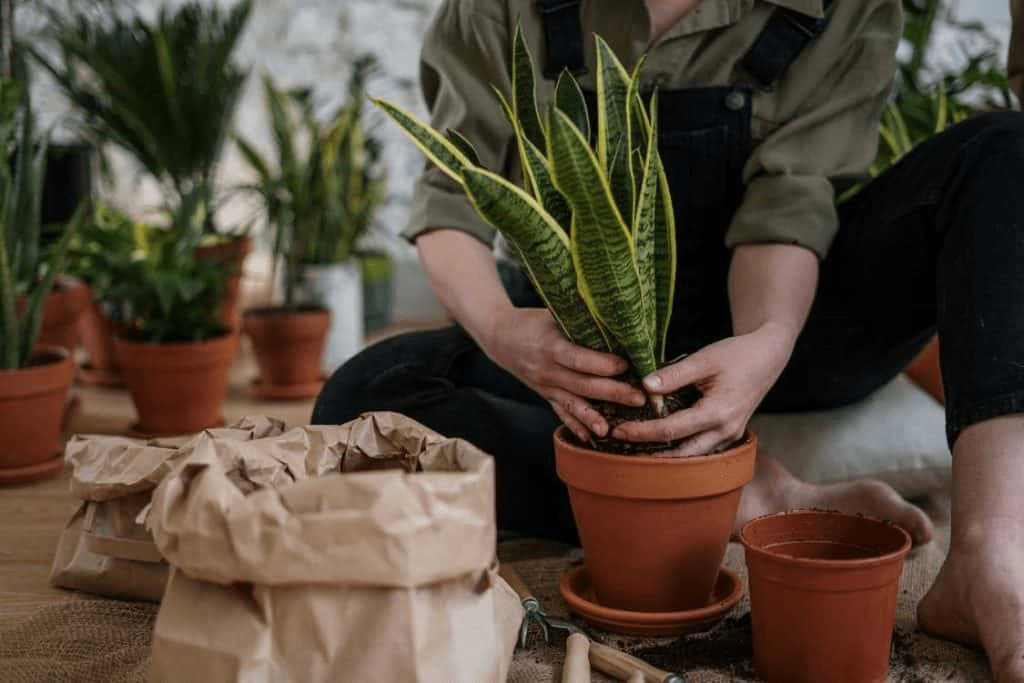
Over time, snake plants can outgrow their containers, leading to root-bound conditions where the roots become crowded and compacted. When this happens, the plant’s growth can be stunted.
To encourage continued growth, it’s important to repot your snake plant when necessary. Look for signs such as roots growing out of the drainage holes, the plant becoming unstable in its pot, or the soil drying out very quickly after watering.
When repotting, choose a slightly larger pot with adequate drainage holes and fill it with fresh, well-draining soil. Carefully remove the plant from its current pot, loosen the roots, and place it into the new container at the same depth as before.
Fill in with soil around the roots, gently pressing down to secure the plant. After repotting, water the plant thoroughly and place it in its usual spot to continue growing.
Provide Enough Air Circulation
Proper air circulation is essential for the health and growth of snake plants. Good airflow helps prevent issues such as fungal diseases and encourages the exchange of gases necessary for photosynthesis.
To ensure adequate air circulation, avoid overcrowding your plants and provide some space between them. If you have multiple plants grouped, consider spacing them out slightly.
Additionally, you can use a small fan set on low to move the air around the plants gently.
Avoid placing snake plants in areas with stagnant air, such as corners or poorly ventilated rooms. By providing adequate air circulation, you can help your snake plant thrive and grow faster.
Watch for Pests and Diseases That Affect Snake Plants
Snake plants are hardy houseplants; thus, pests and diseases hardly affect them. However, that does not mean these plants are immune to diseases. Mealybugs or scales can attach to the plant from time to time, which will affect its growth.
NB. Even a simple thing such as stress, can affect the snake plant’s proper growth.
Be Patient
Lastly, patience is key in encouraging faster growth in snake plants. While implementing these strategies can support optimal growth, remember that plants have their own pace of development.
You’ll eventually see your snake plant thrive and flourish by providing consistent care and monitoring its progress.
What Have We Learnt in This Article?
So far, we have realized that it is possible to make your snake plant grow faster, and here are the things you need to do:
- Provide Adequate Light: Snake plants thrive in indirect sunlight. Place your plant near a window where it can receive bright, indirect light for several hours a day.
- Water Appropriately: Allow the soil to dry out between watering sessions. Overwatering can lead to root rot, which stunts growth. Water the plant thoroughly when the top inch of soil feels dry.
- Use Well-Draining Soil: Ensure your snake plant is potted in well-draining soil. A mix of potting soil, perlite, and sand works well to prevent waterlogging.
- Maintain Warm Temperatures: Snake plants prefer temperatures between 60°F to 85°F (15°C to 29°C). Avoid exposing them to temperatures below 50°F (10°C).
- Provide Adequate Humidity: Although snake plants tolerate low humidity, they appreciate slightly higher humidity levels. You can increase humidity by misting the plant occasionally or placing a tray of water near the plant.
- Fertilize Occasionally: Feed your snake plant with a balanced liquid fertilizer diluted to half-strength during the growing season (spring and summer). Fertilize once every 4-6 weeks to provide necessary nutrients for growth.
- Repot When Necessary: If your snake plant becomes root-bound, it may need repotting. Transplant it into a slightly larger pot with fresh soil to encourage continued growth.
- Prune Regularly: Trim any dead or yellowing leaves to encourage new growth. This also helps maintain the plant’s overall health and appearance.
- Monitor for Pests: Keep an eye out for common pests like spider mites or mealybugs. If you notice any infestation, treat it promptly to prevent damage to the plant.
- Provide Air Circulation: Ensure there is adequate airflow around your snake plant. Good air circulation helps prevent issues like fungal diseases and encourages healthy growth.

